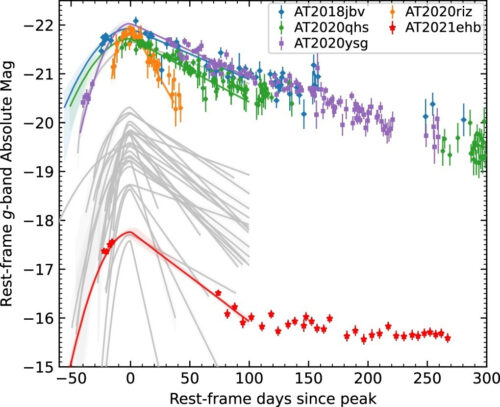
Black holes are enigmatic cosmic objects that push the boundaries of our understanding of physics.
These colossal entities reside at the centers of large galaxies, including our own Milky Way.
When a star ventures too close to a black hole, it succumbs to the overwhelming gravitational force, resulting in its violent disintegration.
Even the most massive stars are no match for the insatiable appetite of black holes.
However, supermassive black holes (SMBHs) did not start out as immensely massive entities.
They attained their gargantuan size by gradually accumulating material over extensive periods and by merging with other black holes.
Despite significant progress, there are still substantial gaps in our knowledge regarding the growth and evolution of SMBHs.
One method employed by astrophysicists to fill these gaps is through the observation of black holes as they consume stars.
Directly observing black holes is an impossible feat since not even light can escape their grasp.
Nonetheless, black holes exert near-total control over their immediate surroundings, causing matter in their vicinity to emit light across various wavelengths as it is bent to their will.
Astronomers possess powerful tools to study this emitted light, one of which is NASA’s Nuclear Spectroscopic Telescope Array (NuSTAR).
Launched in 2012, NuSTAR is a space telescope designed to observe X-rays from astrophysical sources, including SMBHs.
NuSTAR played a critical role in a recent study published in the Astrophysical Journal titled “The Tidal Disruption Event AT2021ehb: Evidence of Relativistic Disk Reflection and Rapid Evolution of the Disk-Corona System,” with Yuhan Yao, a graduate student at Caltech, serving as the lead author.
The study focused on a tidal disruption event (TDE) named AT2021ehb, which occurred at an SMBH in a galaxy approximately 250 million light-years away from Earth.
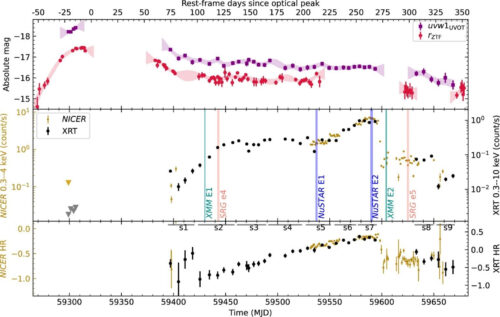
The SMBH in question is about 10 million times more massive than our Sun.
This event presented astrophysicists with a valuable opportunity to observe TDEs using NuSTAR and other telescopes, as it represents the fifth-closest example of a star being destroyed by a black hole.
Black holes are often encircled by vast accretion disks, which are accumulations of gas that have formed over extended periods, sometimes spanning millennia.
These disks can stretch billions of miles wide and, as they swirl toward the black hole, the gas within them heats up, sometimes outshining entire galaxies.
These are the observable black holes that captivate astrophysicists since, without the presence of an accretion disk and its emitted light, a black hole remains invisible.
Even though the accretion disk emits a substantial amount of light, the illumination from a TDE, resulting from a star’s consumption, is still detectable.
TDEs can unfold within a matter of weeks or months, making them ideal targets for observation.
Astophysicists are particularly interested in events that can be observed in their entirety due to the valuable insights they provide.
During the TDE of AT2021ehb, when the black hole tore apart the ill-fated star, there was a noticeable increase in X-ray emissions, albeit with a delayed onset.
These X-rays signaled the creation of superheated material in a structure above the black hole known as a corona.
This is where NuSTAR’s capabilities shine. As a space telescope specializing in detailed X-ray observations, NuSTAR’s proximity to AT2021ehb granted astrophysicists an exceptional opportunity to observe the corona and study the fate of stellar material before it is entirely consumed by the black hole.
The immediate vicinity surrounding the black hole is densely packed, leading to the extreme heating of gas, causing electrons to be stripped away from atoms, resulting in the formation of billion-degree plasma that constitutes the corona.
Although the exact mechanisms behind corona formation are still under investigation, it is likely connected to the magnetic field lines present in the accretion disk.
While the field lines in the outer regions of the disk exhibit a predictable pattern, closer to the black hole, they become tangled, break, and reconnect.
This energetic activity may accelerate particles, ultimately leading to the formation of the superheated corona and the subsequent emission of X-rays.
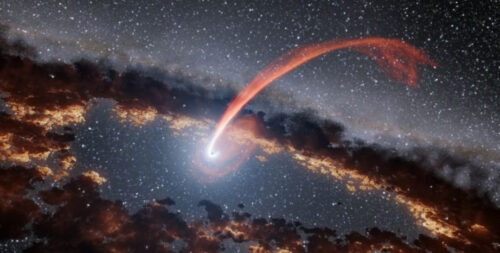
As study co-author Suvi Gezari, an astronomer at the Space Telescope Science Institute in Baltimore, explains, “Tidal disruption events are a sort of cosmic laboratory.
They’re our window into the real-time feeding of a massive black hole lurking in the center of a galaxy.”
While a previous study in Nature Astronomy established a connection between black hole jets and coronae, it did not rely on observations of a TDE.
The recent study involving AT2021ehb expanded our understanding further by revealing the link between a star’s proximity to a black hole and the formation of a corona, which serves as the precursor to a black hole’s relativistic jets.
When a star ventures too close to a black hole, the side of the star nearest to the hole is torn apart first, destroying its spherical shape.
This catastrophic event gives rise to a stream of gas that flows toward the black hole’s accretion disk, subsequently swirling around it.
As the material within the stream whips around, it collides with itself, generating shockwaves and outward gas flows.
These flows emit light across the electromagnetic spectrum, including ultraviolet (UV) and X-rays.
After an initial period of heating and subsequent cooling, the material eventually settles down, leading to a decrease in light emissions.
The Zwicky Transient Facility (ZTF) initially detected the TDE of AT2021ehb on March 1st, 2021.
Subsequently, NASA’s Swift Observatory and the Neutron Star Interior Composition Explorer (NICER) telescope conducted their own observations.
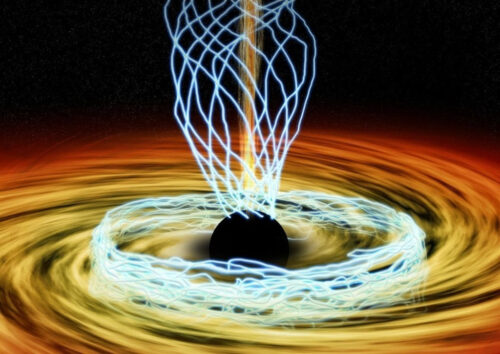
Each of these instruments is sensitive to different wavelengths of light, and their combined efforts provide a more comprehensive understanding of complex astrophysical events such as TDEs.
However, a surprising twist occurred after the initial heating and cooling period.
Roughly 300 days after the ZTF’s initial detection, NASA’s NuSTAR observed the TDE and identified the presence of a hot corona.
Nevertheless, scientists were taken aback by the absence of relativistic jets typically associated with coronae.
These jets usually emanate from opposing sides of a black hole.
Lead author Yuhan Yao remarks, “We’ve never seen a tidal disruption event with X-ray emission like this without a jet present, and that’s really spectacular because it means we can potentially disentangle what causes jets and what causes coronae.
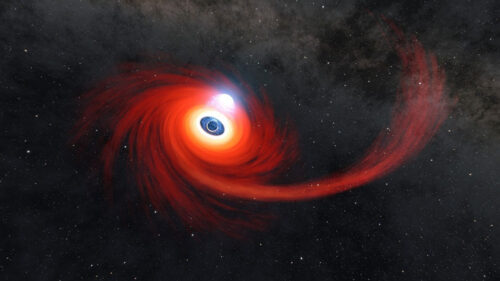
Our observations of AT2021ehb are in agreement with the idea that magnetic fields have something to do with how the corona forms, and we want to know what’s causing that magnetic field to get so strong.”
The study of AT2021ehb and its corona has provided astrophysicists with valuable insights into the complex relationship between black holes, stars, and the formation of coronae and jets.
By leveraging powerful tools like NuSTAR and collaborating observations from multiple telescopes, scientists inch closer to unraveling the mysteries surrounding black holes, bringing us one step closer to comprehending the enigmatic wonders of the cosmos.
